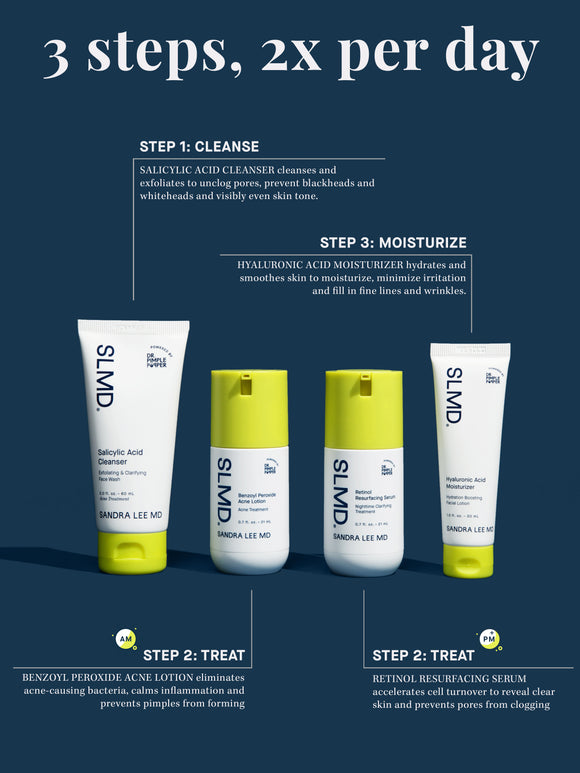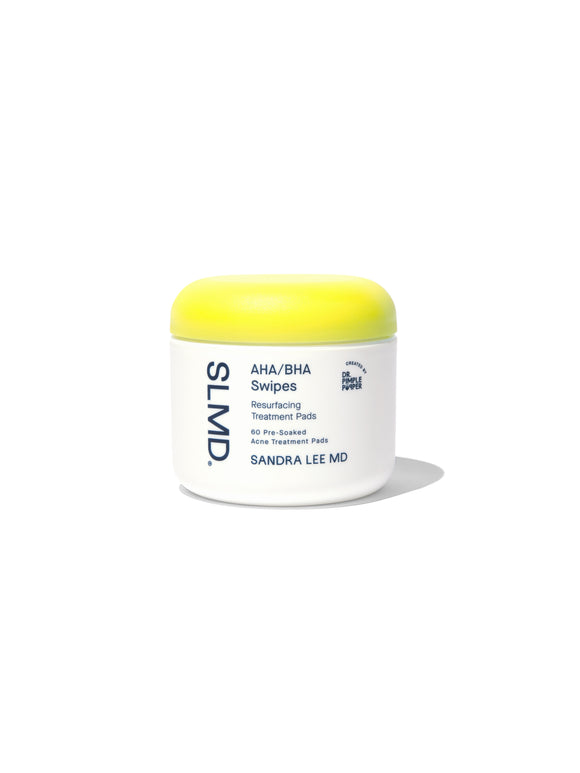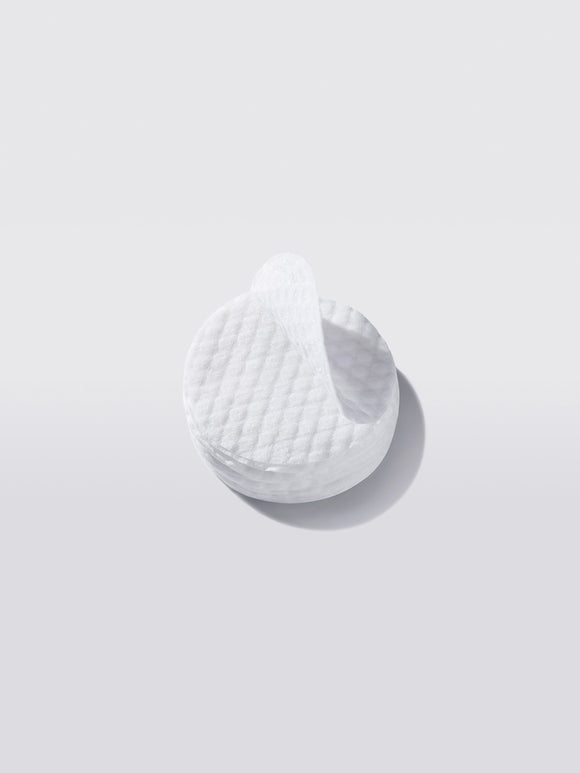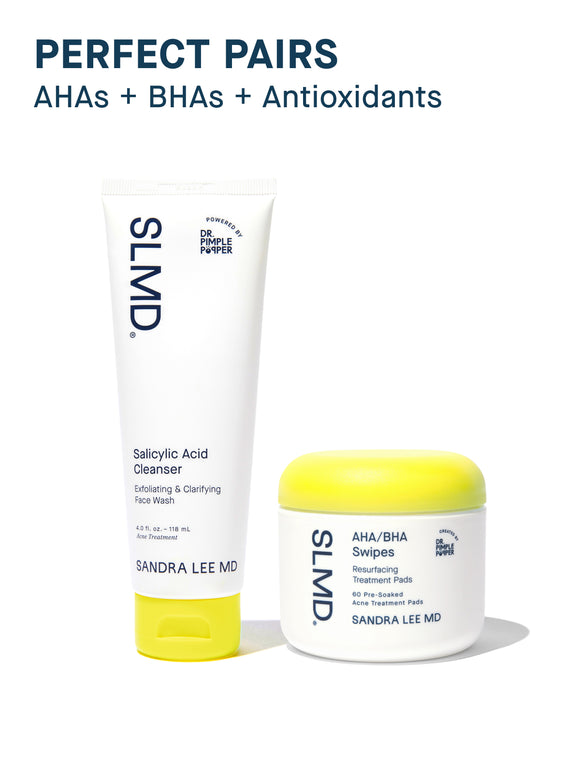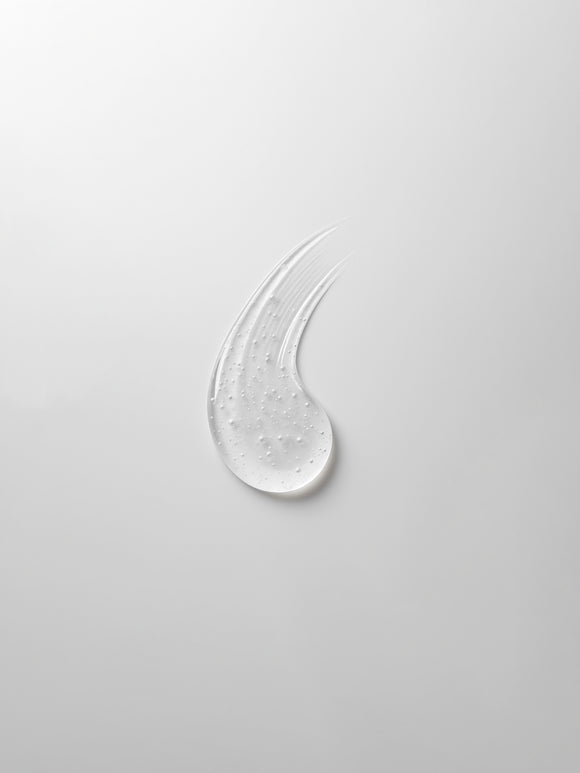
Types of Acne Vulgaris: How to Identify & Treat Common Breakouts
Yes, it matters: because different types of pimples need different treatments.
Published:
3 minute read
Sincer we're all human, acne is pretty much inescapable: experts estimate it affects up to 90% of people at some point. Which makes it surprising how many of us don’t realize there are different types of acne — let alone why that even matters.
Turns out, the variety of acne vulgaris (aka common acne) that a person has is key to choosing the right treatment. So how do you figure out what type of acne you have? Ask SLMD founder and board-certified dermatologist Sandra Lee, MD (aka Dr. Pimple Popper) — of course.
Article Quick Links
What are the types of acne?
All acne starts in the same place: inside the pores. Each pore contains a hair follicle and a sebaceous gland that produces sebum, your skin’s natural oil. When dead skin cells build up and mix with sebum, they can clog the pore — and that’s when acne forms.
There are two main categories of acne vulgaris:
- Non-inflammatory acne: blackheads and whiteheads caused by clogged pores
- Inflammatory acne: pimples that are red, swollen, and often painful — caused by bacteria and inflammation
Dr. Pimple Popper's Acne Vulgaris Treatments
What is non-inflammatory acne?
This type of acne includes blackheads and whiteheads, also called comedones.
- Blackheads (open comedones) appear when the clogged pore remains open and the contents oxidize, turning dark.
- Whiteheads (closed comedones) are clogged pores that stay beneath the skin, giving them a whitish or flesh-colored appearance.


How to treat non-inflammatory acne
Focus on ingredients that:
- Unclog pores: Salicylic acid (a beta hydroxy acid) can dissolve oil and help clear blockages. Try: SLMD Salicylic Acid Cleanser, Salicylic Acid Spot Treatment
- Exfoliate: AHAs (like glycolic acid) and BHAs work together to loosen dead skin cells. Try: SLMD AHA/BHA Swipes
- Regulate cell turnover: Retinoids like retinol prevent clogged pores and encourage smoother skin over time. Try: SLMD Retinol Resurfacing Serum
Dr. Pimple Popper tip: “Don’t overdo it — too much exfoliation can damage your skin barrier and cause more breakouts.”
What is inflammatory acne?
When Cutibacterium acnes (C. acnes) bacteria get into a clogged pore, your body triggers an immune response — causing redness, swelling, and sometimes pain.
- Papules: small, red bumps with no visible pus.
- Pustules: red pimples with a white or yellowish center.
- Nodules: large, hard bumps that form deep under the skin.
- Cysts: painful, pus-filled lumps that can lead to scarring.
This category also includes hormonal acne, which tends to form along the jawline and chin in response to hormonal fluctuations.

How to treat inflammatory acne
Choose products that:
- Kill acne-causing bacteria: Benzoyl peroxide is the gold standard. Try: SLMD Benzoyl Peroxide Acne Lotion, BP Acne Spot Treatment
- Soothe inflammation: Ingredients like sulfur can calm red, angry skin.
- Prevent future breakouts: A regimen with salicylic acid, benzoyl peroxide, and retinol covers all your bases. Try: SLMD Acne System
For severe or cystic acne that scars, talk to a dermatologist. Prescription options may include oral medications, corticosteroid injections, chemical peels, or laser treatments.
Why knowing your acne type matters
Different acne types need different treatments — and using the wrong one can actually make things worse. For example, harsh scrubs won’t help cystic acne, and heavy creams might clog pores if you’re prone to blackheads.
Understanding what kind of acne you have is the key to building a skincare routine that works — not just in the short term, but over time.
Dr. Pimple Popper tip: “Treating acne isn’t one-size-fits-all. But when you use the right ingredients consistently, you can see real results.”
FAQs about acne types and treatments
Q: Can I have more than one type of acne at the same time?
A: Yes — most people have a mix of blackheads, pimples, even the occasional cyst. That’s why combination treatment systems are so effective.
Q: How do I know if my acne is hormonal?
A: Hormonal acne tends to flare with your cycle and shows up along your jawline or chin. It often resists standard treatments and may require prescription support.
Q: When should I see a dermatologist?
A: If your acne is painful, scarring, or not responding to over-the-counter treatments, it’s time to consult a pro. Here’s how to know when to see a dermatologist for acne.

Dr. Lee's Last Word
Acne is one of the most common skin concerns my patients have — and the good news is, we can manage it with dermatological ingredients. The first step is identifying your specific acne type so we can tailor your skincare routine to treat it.




